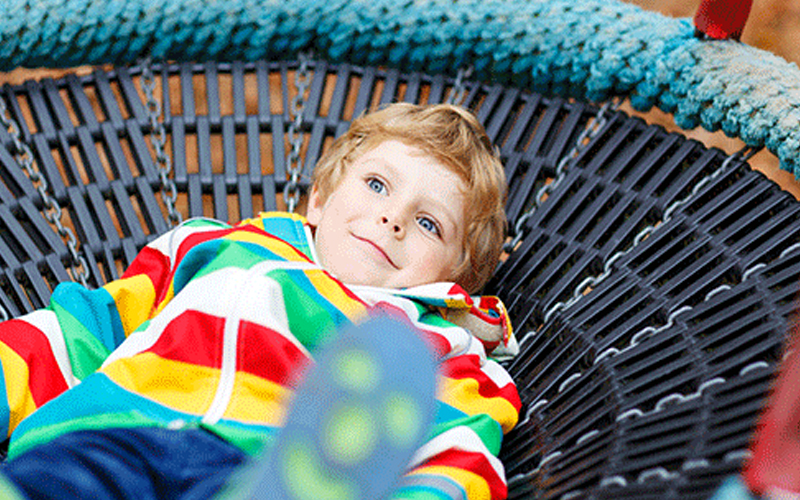In both the local children’s Therapy Center and also in the school therapy room, she would almost always spend some of her hour session up on a swing.
Platform swings, log swings, bucket swings – they were all readily available to hook up with carabiners when the time came.
I don’t know if it’s a question of funding and resources, or if the therapists we are working with just don’t place the same value on the use of swings in therapy.
I’ve mentioned to her occupational therapist and physiotherapist how she used to be on swings in therapy several times a week and how much she loved it.
Their response is rather, “Oh, that’s nice,” (moving swiftly on).
Since starting therapy at the development centre here in March, she has not yet been on a swing.
She has a joint visit monthly with OT, PT and Speech.
I have asked to use the swing, but when we were supposed to, someone else apparently beat us to the room!
I am hoping that once she moves into school here this incoming year we will again get some more therapy time on swings.
Brielle is deafblind and has difficulty communicating, along with other health issues.
Swings are great for her because they awaken her vestibular sense and help with her sensory integration.
They allow her to practice sitting with minimal support, and work on her core balance and her muscle tone.
They also encourage bonding between Brielle and the therapist, and open many communication opportunities – reinforcing manual signs and spoken word for “swing, let’s go, stop, want more?” etc.
And they are just downright FUN!
Of course we do avail of all the local playgrounds for swinging fun!
We’ve found some very nice toddler bucket swings and also some larger net basket type swings that she enjoys too.
But a downside to outdoor swings are playgrounds are very weather-dependent!
